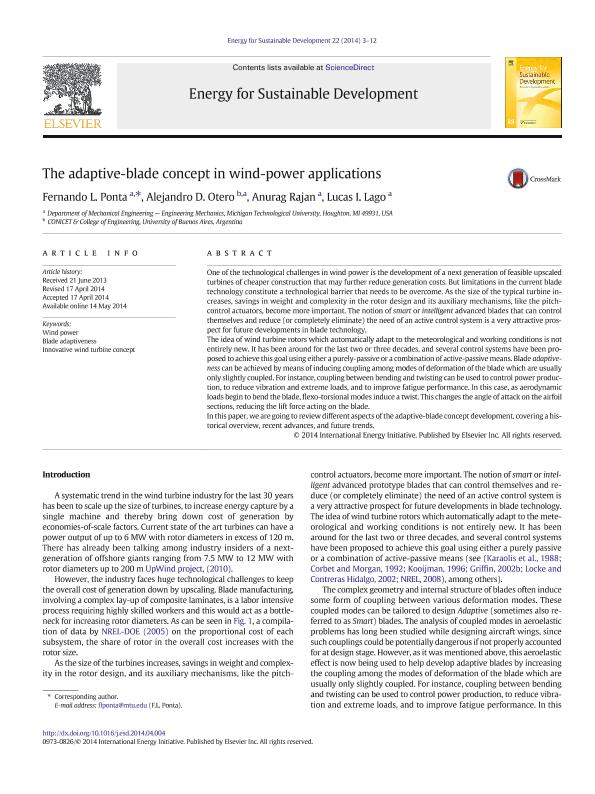Artículo
The adaptive-blade concept in wind-power applications
Fecha de publicación:
10/2014
Editorial:
Elsevier
Revista:
Energy for Sustainable Development
ISSN:
0973-0826
Idioma:
Inglés
Tipo de recurso:
Artículo publicado
Clasificación temática:
Resumen
One of the technological challenges in wind power is the development of a next generation of feasible upscaled turbines of cheaper construction that may further reduce generation costs. But limitations in the current blade technology constitute a technological barrier that needs to be overcome. As the size of the typical turbine increases, savings in weight and complexity in the rotor design and its auxiliary mechanisms, like the pitch-control actuators, become more important. The notion of smart or intelligent advanced blades that can control themselves and reduce (or completely eliminate) the need of an active control system is a very attractive prospect for future developments in blade technology.
The idea of wind turbine rotors which automatically adapt to the meteorological and working conditions is not entirely new. It has been around for the last two or three decades, and several control systems have been proposed to achieve this goal using either a purely-passive or a combination of active-passive means. Blade adaptiveness can be achieved by means of inducing coupling among modes of deformation of the blade which are usually only slightly coupled. For instance, coupling between bending and twisting can be used to control power production, to reduce vibration and extreme loads, and to improve fatigue performance. In this case, as aerodynamic loads begin to bend the blade, flexo-torsional modes induce a twist. This changes the angle of attack on the airfoil sections, reducing the lift force acting on the blade.
In this paper, we are going to review different aspects of the adaptive-blade concept development, covering a historical overview, recent advances, and future trends.
Palabras clave:
Wind Power
,
Blade Adaptiveness
,
Innovative Wind Turbine Concept
Archivos asociados
Licencia
Identificadores
Colecciones
Articulos(CSC)
Articulos de CENTRO DE SIMULACION COMPUTACIONAL P/APLIC. TECNOLOGICAS
Articulos de CENTRO DE SIMULACION COMPUTACIONAL P/APLIC. TECNOLOGICAS
Citación
Rajan, Anurag; Lago, Lucas Ignacio; Otero, Alejandro Daniel; Ponta, Fernando Luis; The adaptive-blade concept in wind-power applications; Elsevier; Energy for Sustainable Development; 22; 10-2014; 3-12
Compartir
Altmétricas




